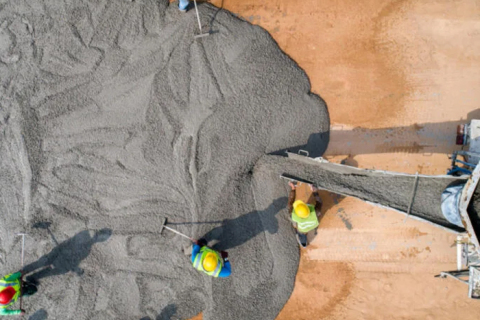
- Home
- >
News
Industrial Grade Hydroxypropyl Methylcellulose (HPMC) is a versatile additive widely used in the construction materials industry. It provides exceptional performance characteristics for wall putty and tile adhesives, making it an indispensable key ingredient in these products.
This product article highlights the benefits of using High-Quality HPMC Water Retention Agent in gypsum plasters, focusing on its water retention, workability, eco-friendliness, and compatibility with other additives.
As a leading chemical materials company, we understand the importance of high-performance additives in the construction industry. Our High Quality Water Retention Agent, Hydroxypropyl Methylcellulose (HPMC), is specifically formulated to enhance the performance of gypsum plasters. This article will explore the unique benefits of HPMC, its applications, and why you should choose our product for your construction needs.
Hydroxypropyl methylcellulose (HPMC) is a chemically modified cellulose polymer widely used in building materials. Its primary functions include enhancing the performance of mortars and cement, improving construction quality, and offering environmental benefits.
Hydroxypropyl Methylcellulose (HPMC) serves as a high-performance building material modifier that plays a crucial role in the construction industry. Its outstanding adhesive properties, rheological property adjustment, and water resistance make it widely used in products such as cement mortar, tile adhesives, and coatings. By enhancing adhesion, improving water resistance, and adjusting rheological characteristics of building materials, HPMC brings innovation to the construction sector, establishing itself as an indispensable material.
1. HPMC element uniformity Homogeneous reaction of hydroxypropyl methyl cellulose, methoxy, hydroxypropoxy evenly distributed, high water retention rate.
Water: Hydroxypropyl methylcellulose is soluble in water, and the aqueous solution is surface active, highly transparent and stable.
In the field of building materials, Hydroxypropyl Methyl Cellulose (HPMC ) is being regarded as a revolutionary product. Its multifunctional properties not only improve construction efficiency, but also greatly improve the performance of building materials. This renewable polymer brings a host of advantages to the construction industry, making it an emerging favorite.
HPMC, or Hydroxypropyl Methylcellulose, is a versatile chemical compound that is widely used in the construction industry. It is a type of cellulose ether that is derived from natural cellulose and is a water-soluble polymer. HPMC is used in various applications in the construction industry, including:
From June 19th to 20th, the 37th International Fine and Specialty Chemicals Exhibition was held at the Düsseldorf Exhibition Center in Germany, attracting representatives from the global chemical and materials industries. As a company focusing on chemicals and materials, East Chemicals showcased its unique solutions at the exhibition with high-performance chemicals and advanced materials as its main line.
Hydroxypropyl methyl cellulose is a synthetic polymer made from natural cellulose through chemical modification. Cellulose ether is a derivative of natural cellulose. The production of cellulose ether is different from synthetic polymers. Its most basic material is cellulose, a natural polymer compound. Due to the special structure of natural cellulose, cellulose itself has no ability to react with etherifying agents. However, after treatment with the swelling agent, the strong hydrogen bonds between and within the molecular chains are destroyed, and the active release of the hydroxyl group becomes alkali cellulose with the ability to react. After the reaction of the etherifying agent, the -OH group is converted into the -OR group. Cellulose ether is obtained.












